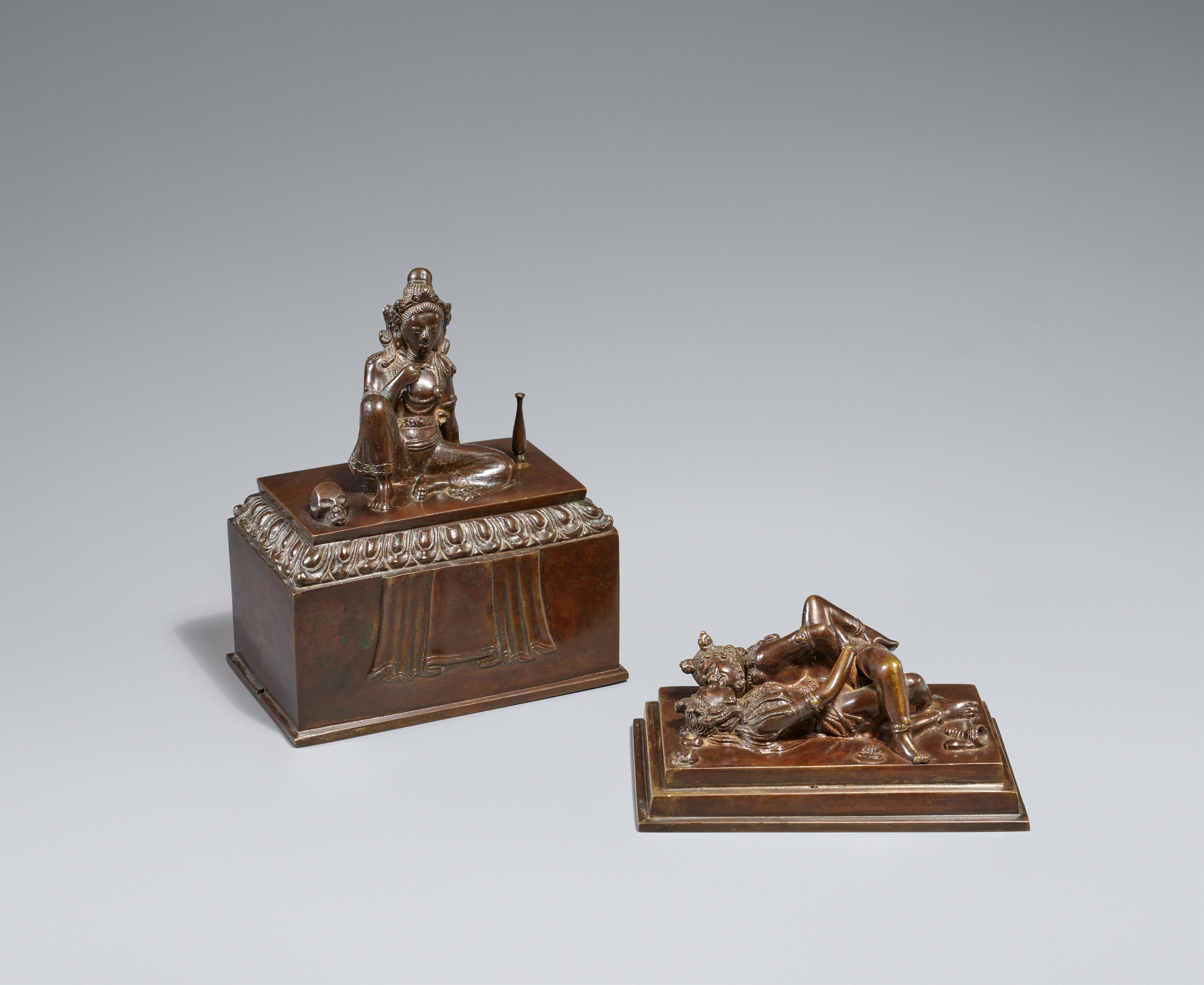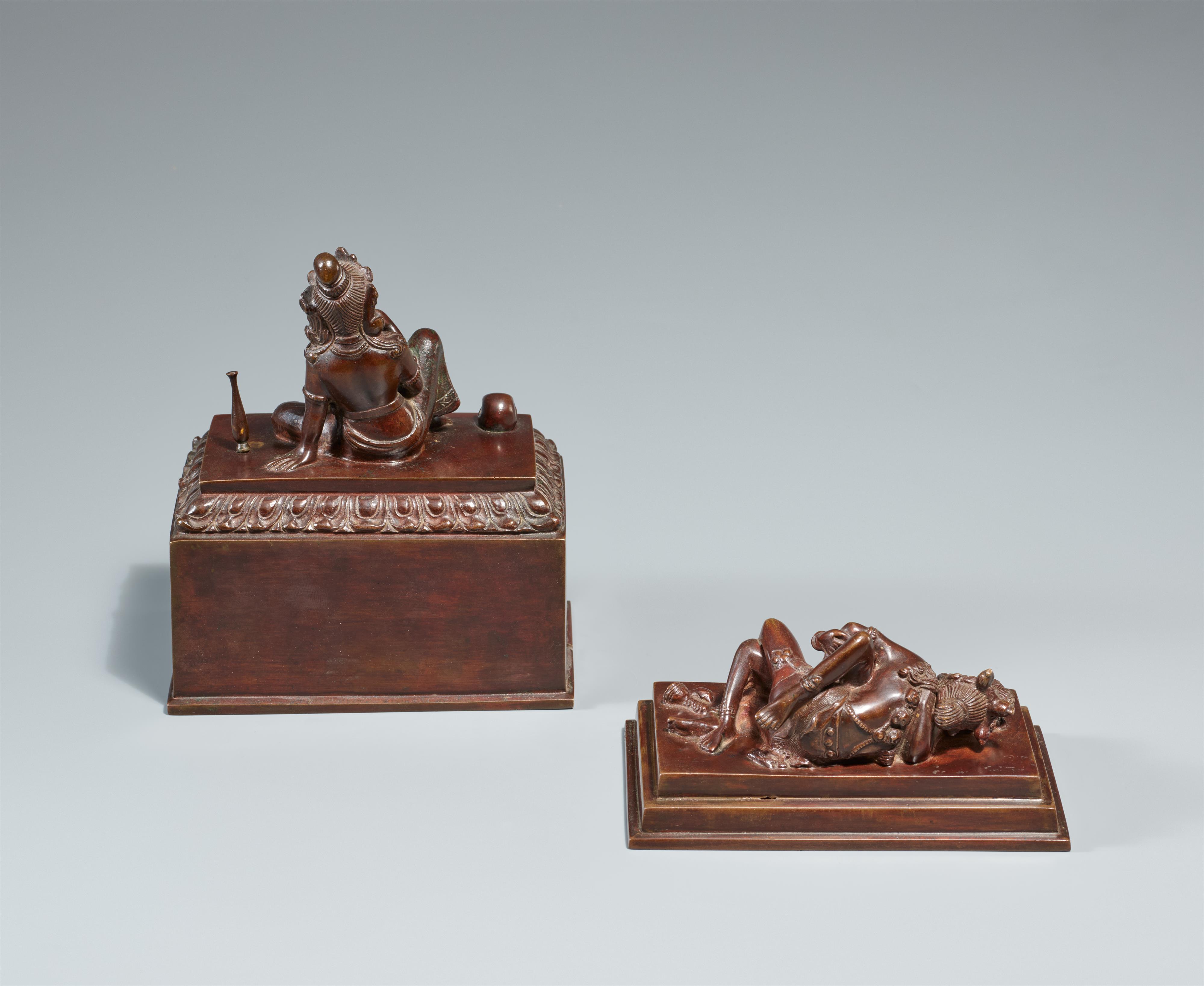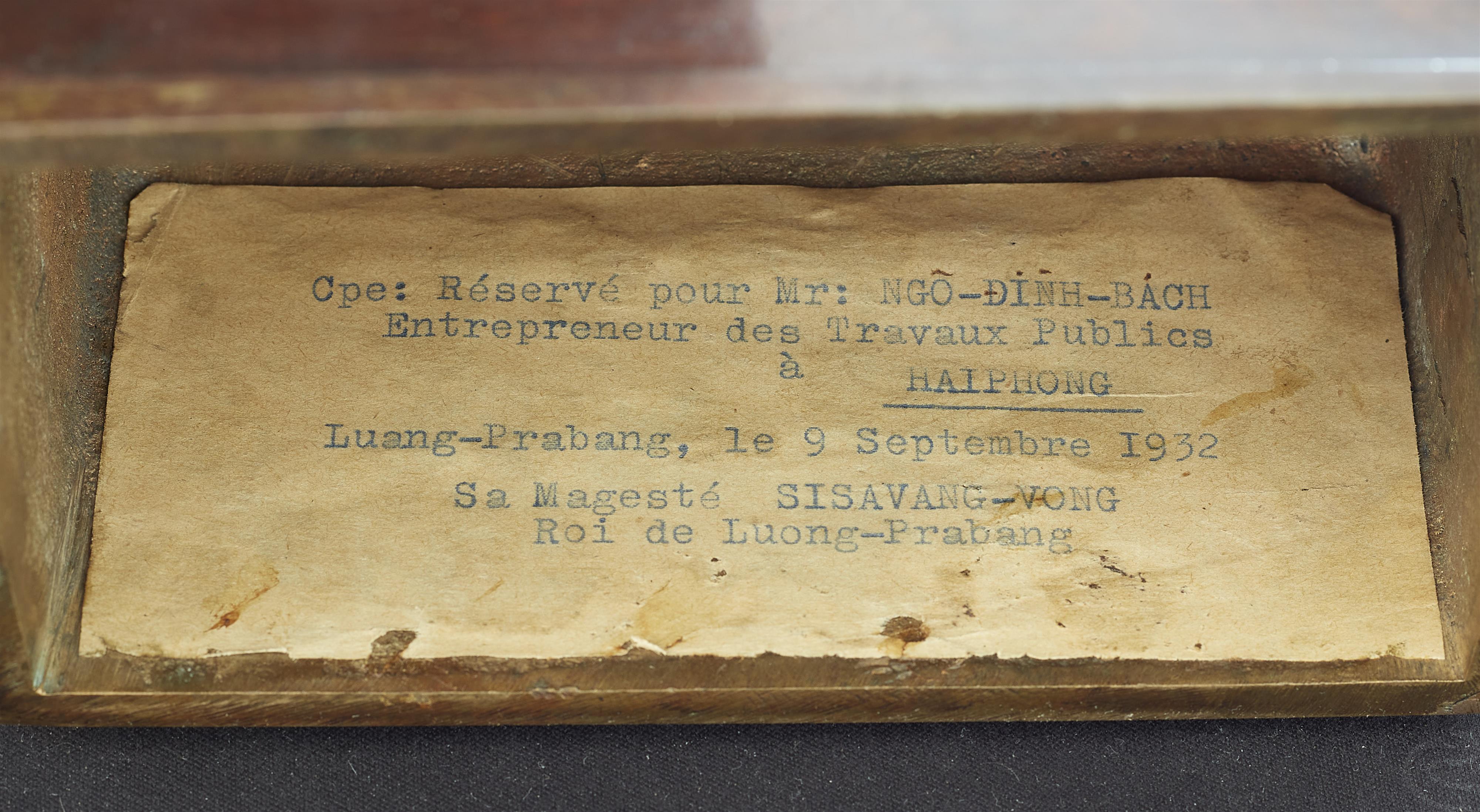An Indochinese rectangular bronze box and cover. 1920s
The cover with a female figure seated in a relaxed pose with a skull and a vase to her sides. On a rectangular base to the inside a couple making love, possibly Chakrasamvara and Vajravarahi amidst various items such as a kapala, a kartika and a ghanta lying on the floor. A paper label to the inside of the cover. A typewritten note in french to the inside of the cover reading: Cpe: Reserve´pour Mr: NGo Dinh-Bach / Entrepreneur des Traveau Public ``a HAIPHONG Luang.Prabang, le 9 Septembre 1932 / Sa Majesté SISAVANG.VONG / Roi de Luong -Prabang Reserved for Mr. Ngo-Dinh-Bach, public works contractor in Haiphong Luang-Prabang, 9 September 1932
Her majesty Sisavang-Vong, King of Luang Prabang).
Height 17.2 cm; width 14 cm; depth 8.5 cm
The present object was purchased in Holland, from someone who had acquired it in France. An almost identical gilt example was auctioned at Christie's, Amsterdam, on 14 June 1995, lot 127. It was from the Loew Collection and came from the sale at the Hotel Druout in Paris on 22/23 December 1958, lot 9. Another such object is said to have been auctioned at Nagel in 2016.
These references to France, as well as the French-language note that the object was intended for a Vietnamese contractor in the flourishing port city of Haiphong, leads one to speculate that it was produced in Vietnam. This seems all the more probable as numerous stylistic inconsistencies speak against a Tibetan work. In Indochina, however, the French colonial administration had established art and craft colleges in various places from 1903 onwards in order to preserve the local crafts. The École des arts appliqués de Bien Hoa near Saigon, for example, taught bronze casting. Buddhist figures in Siamese and Khmer styles were made here, but the main production consisted of portraits of beautiful women and older men. Bronze casts were also made at the École des Beaux-arts de Hanoï. Copying models was common practice at these colleges.
The academy in Hanoi had sales rooms for members of the Societé coopérative des artistes indochinois. One could well imagine that the king of Luang Prabang visited the academy in Hanoi and where he reserved a work as a gift for the public works contractor
Provenance
Private collection, The Netherlands, according to the consigner acquired in the Dutch art market






